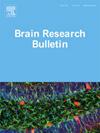Reading instruction causes changes in category-selective visual cortex
Abstract
Education sculpts specialized neural circuits for skills like reading that are critical to success in modern society but were not anticipated by the selective pressures of evolution. Does the emergence of brain regions that selectively process novel visual stimuli like words occur at the expense of cortical representations of other stimuli like faces and objects? “Neuronal Recycling” predicts that learning to read should enhance the response to words in ventral occipitotemporal cortex (VOTC) and decrease the response to other visual categories such as faces and objects. To test this hypothesis, and more broadly to understand the changes that are induced by the early stages of literacy instruction, we conducted a randomized controlled trial with pre-school children (five years of age). Children were randomly assigned to intervention programs focused on either reading skills or oral language skills and magnetoencephalography (MEG) data collected before and after the intervention was used to measure visual responses to images of text, faces, and objects. We found that being taught reading versus oral language skills induced different patterns of change in category-selective regions of visual cortex, but that there was not a clear tradeoff between the response to words versus other categories. Within a predefined region of VOTC corresponding to the visual word form area (VWFA) we found that the relative amplitude of responses to text, faces, and objects changed, but increases in the response to words were not linked to decreases in the response to faces or objects. How these changes play out over a longer timescale is still unknown but, based on these data, we can surmise that high-level visual cortex undergoes rapid changes as children enter school and begin establishing new skills like literacy.

 求助内容:
求助内容: 应助结果提醒方式:
应助结果提醒方式:


